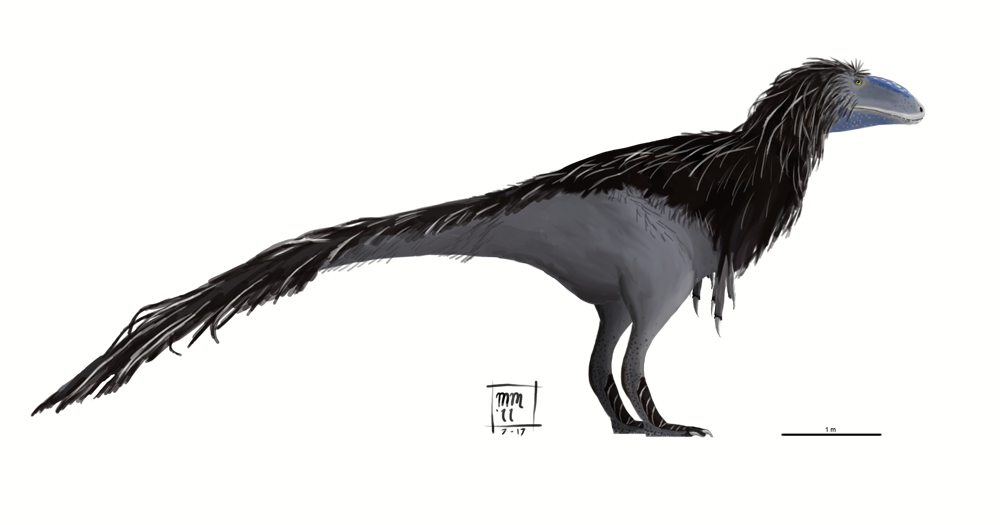home > natural history
Sinotyrannus kazuoensis
"Kazuo Chinese tyrant"

While the Jehol biota is famous for its astonishingly well-preserved small dinosaurs, large dinosaurs from the same rocks are unfortunately usually very fragmentary (with the exception of some nice Jinzhousaurus specimens). Some of the problem lies with the mode of preservation. The anoxic, ash and silt of lake bottoms is great for preserving small creatures like birds and insects, but this kind of 'slab' preservation tends to yield only isolated and crushed bones of much larger animals. However, large animals are known. In addition to the early hadrosaur Jinzhousaurus, another large ornithopod, Bolong, has been identified from the Yixian formation, as have teeth and vertebrae whcih may belong to titanosaurs and a species of Euhelopus. One of the only large animals known from the younger Jiufotang formation is the gigantic tyrannosaur Sinotyrannus. It is by far the largest known theropod from any of the Jehol formations, easily exceeding the largest Yixian predators Dilong paradoxus and Sinocalliopteryx gigas in size. While generally similar to Dilong in some details, it appears to have been more advanced, possibly a close relative of the crested Proceratosaurus. I opted not to give it a characteristiclly large proceratosaurid crest in my reconstruction, though I did give it a flattened nasal boss as a phylogenetic hedge, suitable for a derived proceratosaurid or early member of the line leading toward true deinodontids.
I also chose to give it a partial covering of elongated broad filamentous feathers, or EBFFs, a somewhat quill-like form of early feather. These structures have been identified in an undescribed possible deinodontoid from the Jehol, so their presence in this species would be expected (no soft tissue was preserved in the only known specimen of Sinotyrannus). I was surprised at the scale of the thing when the image was complete--while Tom Holtz (in the 2010 appendix to his popular encyclopedia_ caudiotned that size estimates of 10m may be too high, I found the opposite--even whaen restoring it with stouter, somewhat more Dilong- than Guanlong like proportions due to its large size, and shortening the tail considerably compared to those two (as seen in derived deinodontids), it still comes out to about 10m when all is said and done (see scale chart at right). If it retained the longer, more slender proportions of its ancestors, it would have been quite a bit longer. Either way, this was a predator that rivalled or exceeded the Late Cretaceous Albertosaurus sarcophagus in size, and probably weighed somewhere on the order of 1.5 tonnes. Pretty impressive in a biota known for its mayflies!
.
Image Details:
Media: Digital, Adobe Photoshop CS5 with WACOM Graphire 3
License: ALL RIGHTS RESERVED
DESCRIPTION
Length: 10m (33ft)
Weight: 1.5t
Location: Jiufotang Formation, China
Time: Aptian age, Early Cretaceous (120ma)
CLASSIFICATION
Kingdom: Animalia
Phylum: Chordata
Class: Stem-Aves
Order: Coeluria
Family: Proceratosauridae
Genus: Sinotyrannus
Species: S. kazuoensis
SYSTEMATICS
Sauropsida
Diapsida
Archosauria
Ornithosuchia
Dinosauria
Theropoda
Coelurosauria
Tyrannosauroidea
